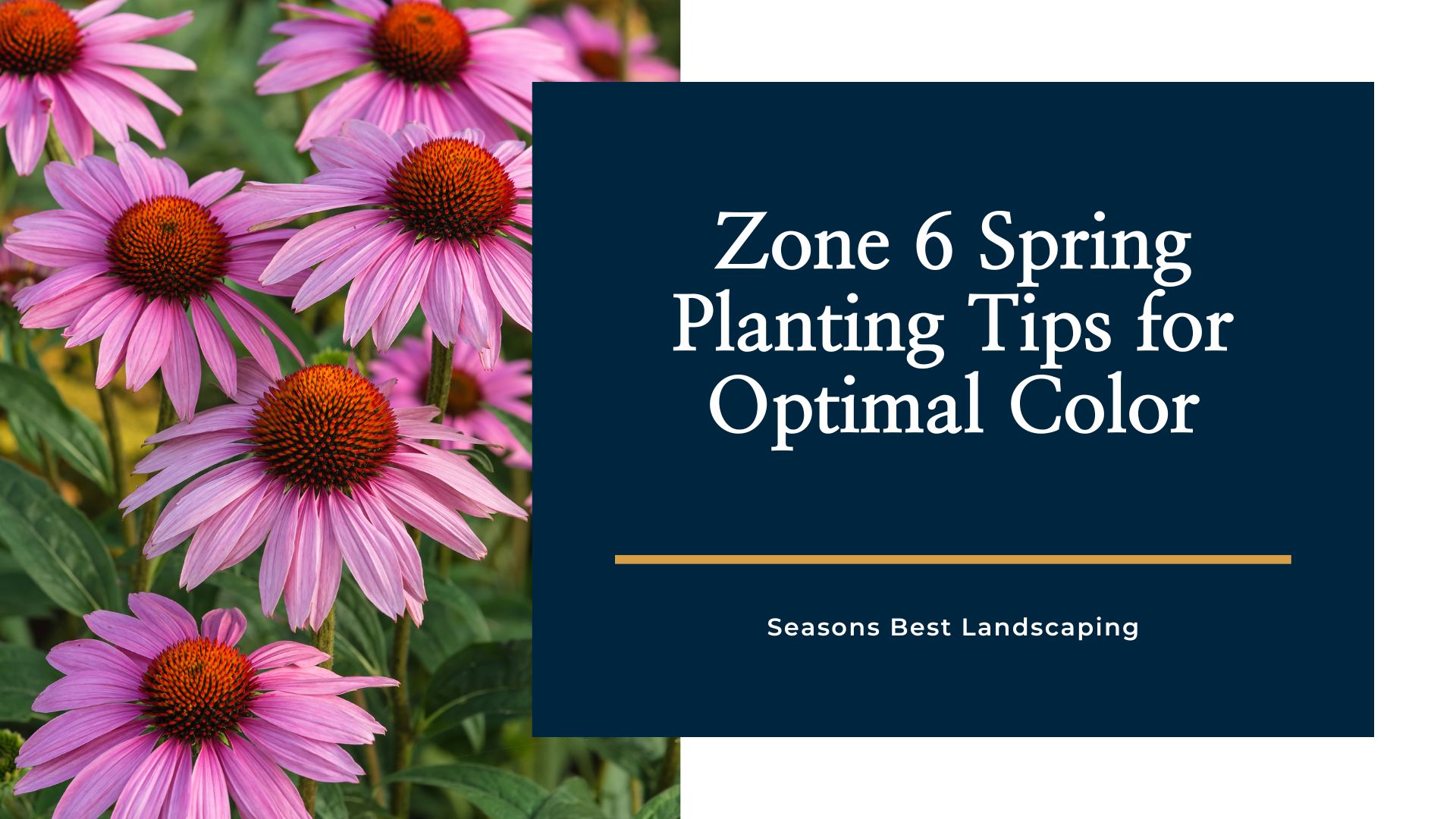
Zone 6 Spring Planting Tips for Optimal Color
Welcome, fellow landscape design enthusiasts, to another blooming season here at Seasons Best Landscaping! As the frosty grip of winter loosens its hold, our green thumbs itch with anticipation for the vibrant burst of colors that spring brings. Today, we’re going to explore Zone 6 spring planting, giving you the best plants and offering expert tips to make your spring garden a riot of color and vitality.
Understanding Zone 6 Spring Planting: A Primer
Cincinnati, Ohio, falls within USDA Hardiness Zone 6b. This zone designation tells gardeners the average minimum winter temperature range, in this case, between -5°F and 0°F. Knowing your zone is crucial for choosing plants that can withstand the coldest nights of the year.
This means that if a plant is hardy in Zones 5 through 8, it’s your ideal companion in Zones 5, 6, 7 and 8. These resilient beauties may struggle in the bone-chilling embrace of Zone 4 or lower, and they’d likely wilt under the scorching summers of Zone 9 or higher.
Timing Is Everything: Zone 6 Gardens and the Last Frost
In Zone 6, the average date of the last frost hovers around April 15. While the temptation to dive into gardening might be strong, as expert landscapers, we often advocate for patience for Zone 6 spring planting. It really is best to wait until early to mid-May before planting vegetables and annual beds.
This strategic delay ensures that the tender shoots aren’t caught off guard by a late frost.
Best Plants for Zone 6 Gardens: A Kaleidoscope of Colors
Now, let’s talk about the stars of the show — your plants! In Zone 6 gardens, a diverse array of perennials steals the spotlight. Ground covers like creeping phlox, dianthus, creeping thyme, stonecrop and violets add a lush carpet to sunny landscapes.
For an all-season color palette, consider interplanting Zone 6 hardy perennials such as echinacea, bee balm, phlox, daylily and many more. These stalwarts withstand late frosts and bring enduring vibrancy to your garden.
Shady spots in Zone 6 gardens call for different actors on the stage. Ajuga, lamium, lungwort, vinca/periwinkle and mukdenia make for excellent groundcovers or borders. Mix in shade-loving perennials like hosta, coral bells, ferns and bleeding heart for a captivating ensemble from the comfort of your own deck or pergola.
Top Picks for Trees and Shrubs in Zone 6 Gardens
Your garden’s performance isn’t complete without the presence of majestic trees and shrubs. And, if you’re looking for help with tree installation or removal, our proven experts are here to assist.
Here are our top picks for your Zone 6 spring planting goals:
Deciduous Shade Trees:
- October Glory or Autumn Blaze Maple, Zones 3-8
- Pin oak, Zones 4-8
- Skyline honey locust, Zones 3-9
- Cleveland Select pear, Zones 5-8
- Ginkgo, Zones 3-9
Deciduous Ornamental Trees:
- Royal Rain Drops crabapple, Zones 4-8
- Ivory Silk Japanese lilac tree, Zones 3-7
- Redbud, Zones 4-9
- Saucer magnolia, Zones 4-9
- Newport plum, Zones 4-10
Evergreen Trees:
- Arborvitae, Zones 3-8
- Colorado blue spruce, Zones 2-7, or Black Hills, Zones 3-7
- Douglas or Concolor fir, Zones 4-8
- Hemlock, Zones 3-7
- White pine, Zones 3-7
Deciduous Shrubs:
- Dappled willow, Zones 5-9
- Red-twig dogwood, Zones 2-9
- Forsythia, Zones 4-8
- Easy Elegance or Knockout rose, Zones 4-8
- Weigela, Zones 4-9
Evergreen Shrubs:
- Boxwood, Zones 4-9
- Juniper, Zones 3-9
- Mr. Bowling Ball arborvitae, Zones 3-8
- Yew, Zones 4-7
- Golden Mops, Zone 5-7
8 Planting Tips for Success in Zone 6 Gardens
- Know your zone: Ensure your selected plants are hardy in Zone 6. This simple step is the key to a thriving garden.
- Mind the frost dates: Respect the last frost date and give your plants a fighting chance by avoiding premature planting.
- Prepare the soil: Invest time in soil preparation. Zone 6 gardens flourish with well-drained, nutrient-rich soil.
- Water wisely: Strike a balance between hydration and overwatering. Deep, infrequent watering is often the mantra for Zone 6 gardens. Want to learn more about watering? Check out our ultimate watering guide.
- Mulch matters: Mulching helps retain moisture, suppress weeds and insulate the soil. A layer of mulch is your garden’s best friend.
- Select native plants: Native plants are well-adapted to the local climate. They are more likely to thrive with less effort on your part.
- Consider microclimates: Zone 6 gardens can have microclimates. Pay attention to sun exposure, wind patterns and variations in soil moisture.
- Plan for year-round interest: Integrate a variety of plants that bloom at different times to ensure your garden is a spectacle throughout the seasons. Remember, maintenance is key.
Gardening is a delightful dance with nature. As the curtain rises on another gardening season, let Seasons Best Landscaping be your guide to creating a vibrant, thriving garden. Schedule a consultation with us today for more expert Zone 6 spring planting tips.
Happy planting!
